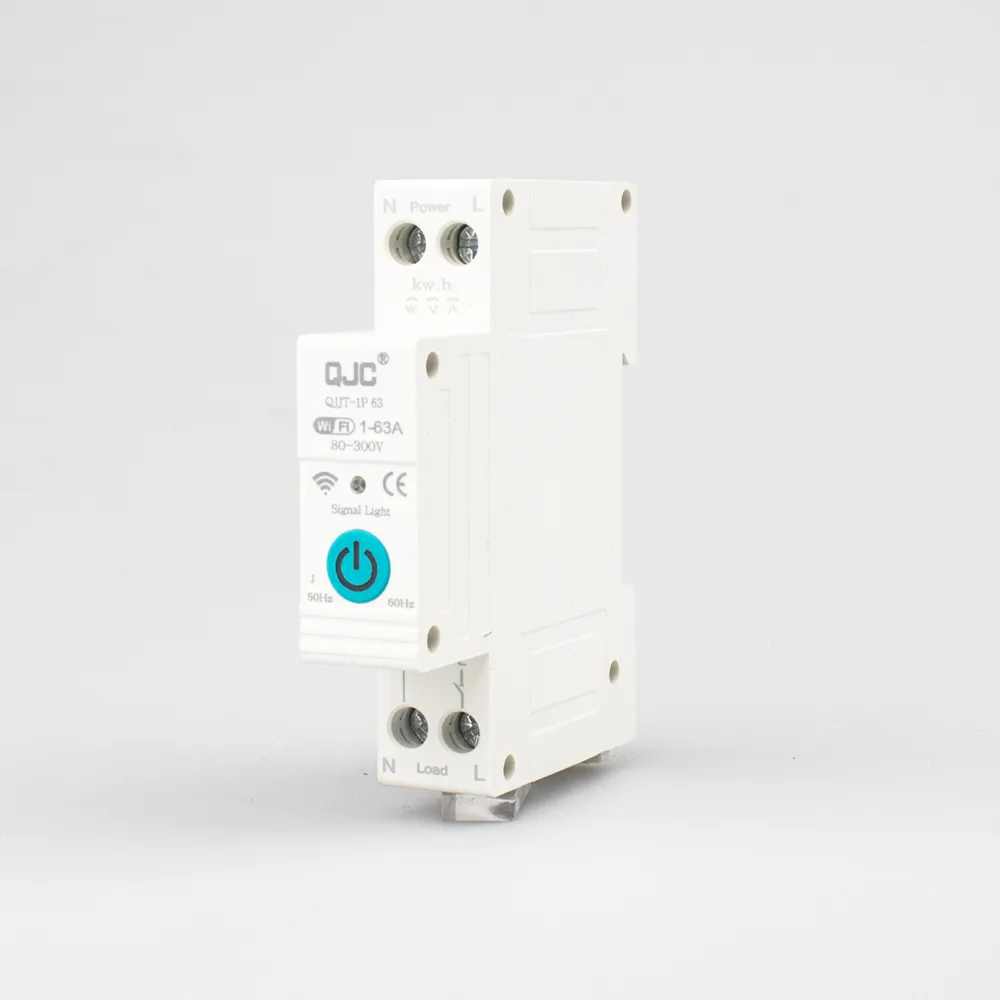Modern electrical systems are getting smarter—and your circuit breakers should, too. If you’ve ever wished you could monitor or reset your electrical panel remotely, you’re not alone. That’s where WiFi circuit breakers come in. This guide explores what they are, how they work, and why upgrading your panel could be a smart move for safety, convenience, and energy efficiency.
What is a WiFi Circuit Breaker?
A WiFi circuit breaker is a smart device that does everything a traditional breaker does—interrupting electrical flow when there’s a fault—but with a big bonus: connect it to your WiFi and control it in real-time from anywhere using the mobile app.

Are WiFi Circuit Breakers Safe?
Yes—provided they meet safety certifications like UL, CE, or IEC, WiFi circuit breakers are just as safe as traditional ones. In fact, they often add an extra layer of protection with features like:
- Instant notifications for overloads or faults
- Temperature and current sensors
- App-based emergency shut-off capabilities
In commercial settings, these features can cut downtime and prevent major electrical failures before they start.
How Does a Smart WiFi Circuit Breaker Work?
Smart breakers operate like traditional breakers at their core—but with additional digital functions layered on top. Here’s how they typically function:
- Real-Time Monitoring: View live data on voltage, current, and energy usage.
- Control Circuits Remotely: Power devices on/off via smartphone app from any location.
- Scheduling & Automation: Set timers or link actions to triggers (e.g., turn off lights at midnight).
- Push Notifications: Get alerts about abnormal loads, power interruptions, or manual overrides.
Most smart breakers connect to your home or office WiFi, and pair with cloud-based apps for control and insights. Some high-end models integrate into smart home ecosystems like Google Home, Alexa, or Home Assistant.
How About Our WiFi Circuit Breaker?
At QJCMCB, our smart breakers are designed for modern applications, combining high reliability with user-friendly controls. Built for residential, commercial, and light industrial use, they feature:
- Overload and short-circuit protection
- Fire-retardant casing and IP20 enclosure
- Daily and weekly scheduling
- Real-time remote operation and reset
- Built-in energy monitoring tools
Example:
A server room operator uses our smart breakers to auto-reset after non-critical outages and remotely disconnect loads when thermal thresholds are breached. This minimizes downtime and cuts cooling costs.
Advantages of Upgrading to WiFi Circuit Breakers
The Difference from Traditional Circuit Breakers
Traditional breakers are passive—they only react. WiFi breakers are proactive—they notify, log, and give you control.
| Feature | Traditional Breaker | WiFi Circuit Breaker |
| Manual Control Only | x | √ |
| Remote Access | x | √ |
| App-Based Monitoring | x | √ |
| Real-Time Alerts | x | √ |
| Smart Scheduling | x | √ |
What Are the Advantages of Using a WiFi Circuit Breaker?
- Early Fault Detection: Identify overloads or short circuits before they become problems.
- Remote Management: Control power distribution in vacation homes, server rooms, or rental properties.
- Energy Monitoring: Analyze usage trends to reduce consumption.
- Increased Uptime: Prevent unplanned outages with auto-reset or manual remote reset.
- Customized Control: Schedule loads to turn on/off according to peak demand pricing or availability.
Example:
An Airbnb host uses smart breakers to disable high-consumption devices like heaters and kitchen equipment automatically after checkout. This improves energy efficiency and lowers fire risk.
Risks of Smart WiFi Circuit Breakers
While the benefits are compelling, it’s important to consider a few potential drawbacks:
- WiFi Dependency: Remote control and monitoring won’t work if your internet connection is unstable.
- Cybersecurity Concerns: Poorly secured smart devices can become attack vectors. Choose products that offer encrypted communication, strong passwords, and firmware updates.
- Higher Cost: Smart breakers are more expensive than traditional models, though they often pay for themselves in energy savings and reduced maintenance.
For mission-critical environments, consider using hybrid panels with both smart and traditional breakers to balance control and reliability.
Implementing Effective Risk Management
Smart breakers offer great tools—but like any system, they need careful planning.
Best Practices:
- Buy Certified: Ensure devices are UL, CE, or IEC certified.
- Secure Your Network: Use encrypted WiFi protocols and firewall protections.
- Install Surge Protection: Safeguard breakers against grid disturbances and lightning strikes.
- Enable Local Control: Make sure manual overrides are accessible if WiFi fails.
- Use Logs Strategically: Use historical data to detect wear and inefficiencies.
Pro Tip:
Many facilities implement usage-based maintenance by analyzing breaker activity logs. This helps predict failure before it happens.
The Future of WiFi Circuit Breakers
WiFi circuit breakers are just the start. They’re evolving quickly, and the next wave will include:
- Smart Grid Integration: Automate load shedding during peak times
- AI-Driven Diagnostics: Self-analyze wear and recommend maintenance
- Voice-Control Interfaces: Enable touch-free operations
- Solar & Battery Support: Prioritize or isolate circuits based on energy source
- Blockchain Tracking: Use secure digital logs for compliance and billing in multi-tenant buildings
Case Study:
A Chinese textile factory installed WiFi-enabled panels from qjcmcb.com and reduced electrical downtime by 42% over six months, thanks to smart alerts and remote resets that minimized manual intervention.
